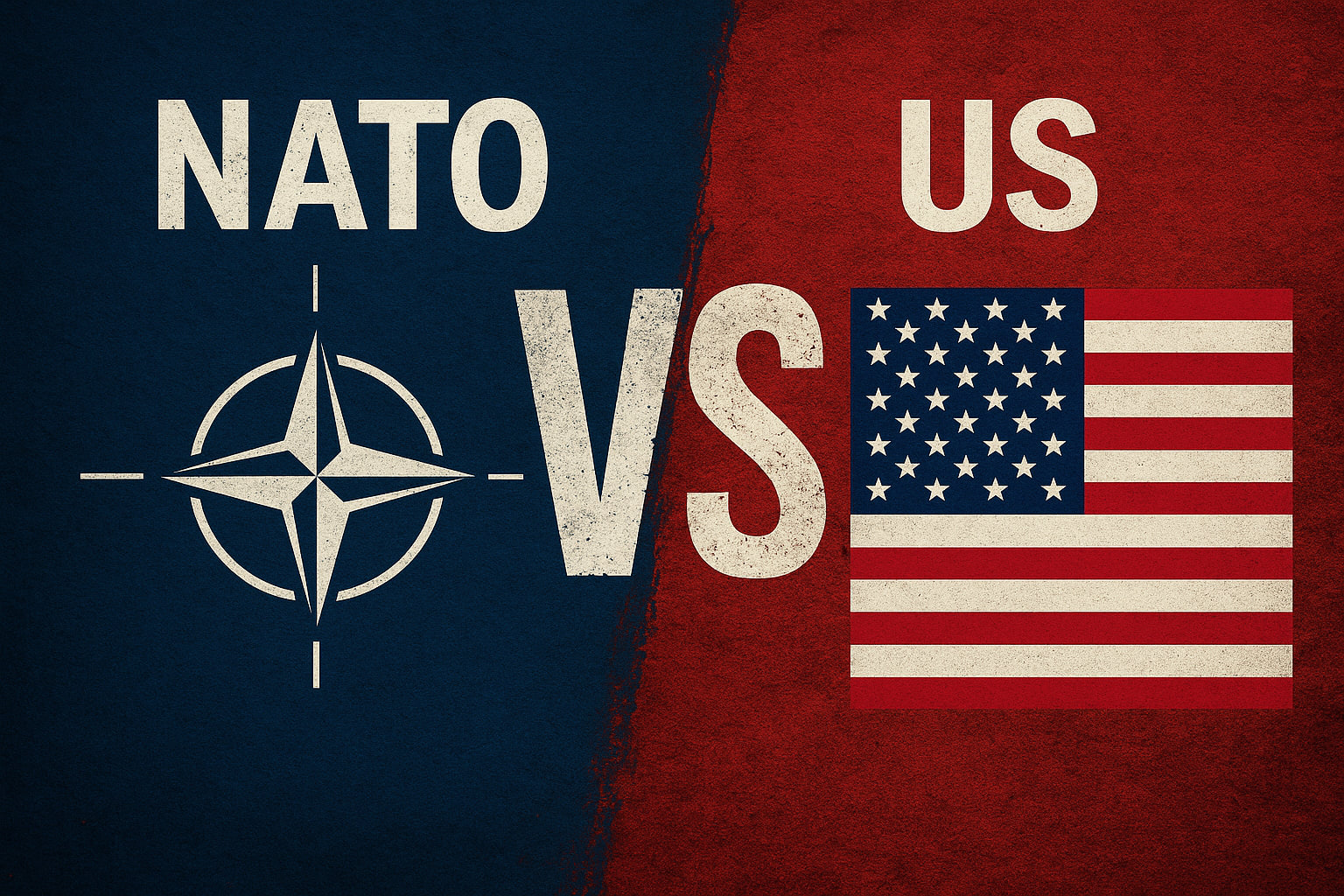Introduction: The Unthinkable Scenario
In the realm of geopolitical strategy and military alliances, some scenarios are so unlikely, so paradoxical, that even imagining them seems absurd. Yet, what if the United States—the most powerful member of NATO—went to war against the very alliance it helped create? 🧨
This idea may sound like pure science fiction, but exploring it reveals not just a dramatic hypothetical, but also exposes the fragile dynamics of international alliances, power structures, and global peace. This article delves deep into this speculative yet instructive question using verified data, military analysis, and political insight.
—
🤝 NATO and the United States: An Unbreakable Bond?
Formed in 1949, the North Atlantic Treaty Organization (NATO) was built as a collective defense alliance to deter Soviet aggression during the Cold War. The United States has always been the de facto leader of NATO, contributing over 70% of the alliance’s total defense spending and providing unmatched technological and logistical capabilities. 🇺🇸
But imagine a political shift—maybe a nationalist U.S. government, rising tensions with European powers, or a breakdown in trust—leads to America exiting NATO and then entering direct conflict with it. What then?
—
💣 The Military Balance: Can NATO Survive Without the U.S.?
Let’s take a closer look at the military imbalance in this hypothetical war:
U.S. Military Power 💪
Personnel: 1.3 million active duty troops
Defense Budget: $877 billion (2023)
Aircraft: 13,000+
Nuclear Warheads: Approx. 5,244
Global Bases: 750+ bases in 80 countries
NATO Without the U.S.
Major Powers: UK, France, Germany, Turkey, Italy
Collective Troops: Approx. 2 million (but fragmented)
Defense Budget (minus U.S.): ~$320 billion
Nuclear States: France and the UK only
Coordination Complexity: High
👉 Conclusion: Militarily, the U.S. alone could match or surpass NATO without its support. The alliance would struggle to operate as a cohesive war machine without American logistics, satellite intelligence, and command infrastructure.
—
🌐 Global Consequences: A World on Fire
💥 World War III Potential
The sheer magnitude of such a conflict would likely draw in non-NATO nations, potentially sparking a global war. China and Russia might seize the opportunity to expand influence, while smaller countries would be forced to take sides.
🧨 Nuclear Risk
With multiple nuclear states involved, the risk of tactical or even strategic nuclear exchange becomes dangerously high. Unlike traditional conflicts, there’s no clear winner in a nuclear war—only devastation. 💀
💰 Economic Collapse
A war between NATO and the U.S. would crash financial markets, disrupt global supply chains, and lead to inflation, unemployment, and mass migrations. The 2020 COVID-19 recession would pale in comparison. 📉
—
🧠 Why This Scenario Still Matters
Though extremely unlikely, the thought experiment is useful because it:
Highlights alliance fragility: Trust and shared values are essential.
Raises awareness about global dependency on American military support.
Encourages proactive diplomacy to avoid even minor rifts escalating.
Even internal political disagreements (e.g., over Ukraine, military budgets, or trade policy) can test the limits of NATO unity. The Trump administration’s threats to leave NATO, for instance, were a chilling preview of how fast alliances can unravel.
—
💬 Final Thoughts: Diplomacy Over Destruction
A NATO vs. U.S. war is not just improbable—it would be suicidal for humanity. Both sides would suffer irreparable damage, and global civilization would be altered, possibly forever.
The world today needs more bridges, not bombs. 🌉🕊️
More negotiation rooms, not nuclear codes.
More unity, not war games.
Let this be a lesson in how vital alliances are—not just in war, but in keeping the peace.
—
🕊️ TL;DR:
🇺🇸 The U.S. is NATO’s backbone; conflict between them is catastrophic.
💥 Such a war would likely lead to global economic collapse and possible nuclear war.
🧠 Though highly unlikely, the scenario teaches us about the importance of diplomacy and alliance management.
—
📣 What Do You Think?
Do you believe modern alliances are strong enough to survive future geopolitical storms? Could growing nationalism ever lead to a U.S.–NATO split?
Drop your thoughts in the comments 💬, and if this article sparked your curiosity, don’t forget to share it with your friends 🌐!
